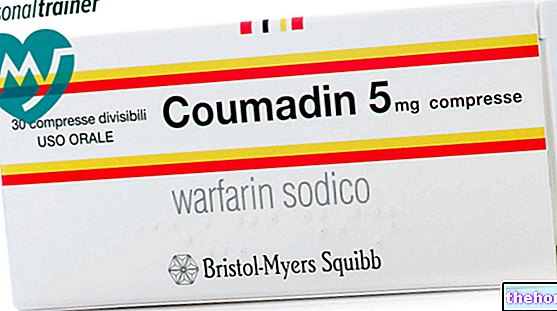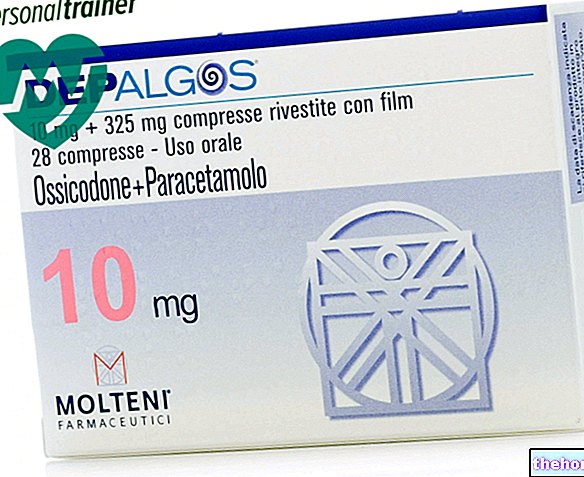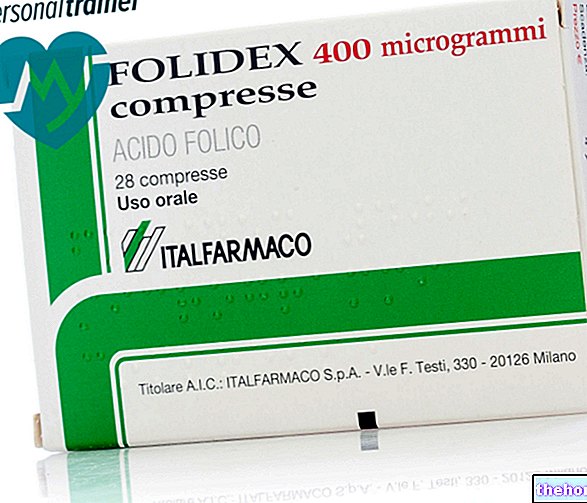Active ingredients: N-Acetylcysteine
FLUIMUCIL 300 mg / 3 ml Solution for nebulizer
Fluimucil package leaflets are available for packs:- FLUIMUCIL 300 mg / 3 ml Solution for nebulizer
- FLUIMUCIL 600 mg granules for oral solution
- FLUIMUCIL 600 mg effervescent tablets
- FLUIMUCIL 600 mg / 15 ml syrup
Indications Why is Fluimucil used? What is it for?
PHARMACOTHERAPEUTIC CATEGORY: Mucolytics.
Treatment of respiratory diseases characterized by thick and viscous hypersecretion: acute bronchitis, chronic bronchitis and its exacerbations, pulmonary emphysema, mucoviscidosis and bronchiectasis.
Contraindications When Fluimucil should not be used
Hypersensitivity to the active substance or to any of the excipients.
Children under the age of 2.
Precautions for use What you need to know before taking Fluimucil
Mucolytics can induce bronchial obstruction in children under 2 years of age. In fact, the drainage capacity of the bronchial mucus is limited in this age group, due to the physiological characteristics of the respiratory tract.
They should therefore not be used in children under 2 years of age.
The use of the drug in patients suffering from peptic ulcer or with a history of peptic ulcer requires particular attention, especially in the case of concomitant use of other drugs with a known gastrically damaging effect.
Patients with bronchial asthma must consult a doctor before taking Fluimucil and be closely monitored during therapy; if bronchospasm occurs, treatment must be stopped immediately.
Interactions Which drugs or foods can modify the effect of Fluimucil
Tell your doctor or pharmacist if you have recently taken any other medicines, even those without a prescription.
Drug-drug interaction
In case of treatment with nitroglycerin-based drugs, it is advisable to contact your doctor. In fact, the simultaneous intake of nitroglycerin and N-acetylcysteine causes significant hypotension and causes dilation of the temporal artery, with possible onset of headache; therefore, pressure monitoring is necessary.
Antitussive drugs and N-acetylcysteine should not be taken at the same time as the reduction of the cough reflex could lead to an accumulation of bronchial secretions.
Simultaneous administration of a bronchial mucolytic and a substance that inhibits secretions (for example an anticholinergic) should be avoided.
FLUIMUCIL can be administered together with common bronchodilator drugs, vasoconstrictors, etc: in this case the product must be used as soon as possible.
The information available on the antibiotic-N-acetylcysteine interaction refers to in vitro tests, in which the two substances were mixed, which showed a decreased activity of the antibiotic. However, as a precaution, it is recommended not to take other drugs at the same time as N-acetylcysteine.
Drug-laboratory test interactions
N-acetylcysteine can cause interference with the colorimetric assay method for the determination of salicylates.
N-acetylcysteine can interfere with the test for the determination of ketones in urine.
Warnings It is important to know that:
The administration of N-acetylcysteine, especially by aerosol, at the beginning of the treatment can thin the bronchial secretions and at the same time increase the volume; if the patient is unable to expectorate effectively, to avoid the retention of secretions it is necessary to resort to postural drainage or, possibly, bronchoaspiration.
Fluimucil presents, upon opening the vial, a sulphurous odor which does not, however, disturb the administration of the preparation in any way.
The N-acetylcysteine solution stored in the open vial, or transferred to the aerosol apparatus, can exceptionally take on a pink color, without this compromising the activity and tolerability of the preparation.
Since N-acetylcysteine can chemically react with certain materials (eg rubber, iron, copper), it is advisable to use glass or plastic aerosol appliances. For appliances with metal or rubber parts, it is necessary to wash the appliances with water immediately after use.
Pregnancy and breastfeeding
Ask your doctor or pharmacist for advice before taking any medicine.
Teratological studies conducted with N-acetylcysteine on animals did not show any teratogenic effect; However, no controlled studies are available in man. Therefore, its administration during pregnancy can only be carried out in case of real need under the direct supervision of the doctor. In the absence of studies relating to the possible excretion into breast milk, the use of FLUIMUCIL should be avoided during breastfeeding.
Effects on ability to drive and use machines
There is no evidence that the drug can affect the ability to drive or use machines.
Important information about some of the ingredients
One ampoule of Fluimucil contains 43 mg (1.9 mmol) of sodium; keep this information in mind in the case of patients on a controlled sodium diet.
Dosage and method of use How to use Fluimucil: Dosage
One vial is nebulized every session, carrying out 1-2 daily sessions for 5-10 days.
Given the high tolerability of the preparation, the frequency of the sessions and the doses for each of them can be modified by the doctor within quite wide limits, in relation to the clinical form and the therapeutic effect, and without the need to clearly differentiate the doses for the "adult from pediatric ones.
Overdose What to do if you have taken too much Fluimucil
In case of accidental ingestion / intake of an excessive dose of FLUIMUCIL, notify your doctor immediately or go to the nearest hospital.
No cases of overdose have been observed in subjects treated by inhalation.
Excessive doses through nebulization could however cause an excessive and massive fluidification of the secretions for which, especially in subjects with tussigenous reflex and deficient and depressed expectoration, it may be necessary to resort to instrumental methods of bronchoaspiration.
Side Effects What are the side effects of Fluimucil
Like all medicines, FLUIMUCIL can cause side effects, although not everybody gets them.
Following administration by aerosol, the following adverse reactions have been reported:
hypersensitivity, bronchospasm, rhinorrhea, bronchial obstruction, stomatitis, vomiting, nausea, urticaria, rash, pruritus.
In very rare cases, severe skin reactions have occurred in temporal connection with the intake of N-acetylcysteine, such as Stevens-Johnson syndrome and Lyell syndrome.
Although in most cases at least one other drug suspected and more likely involved in the genesis of the aforementioned mucocutaneous syndromes has been identified, in the event of mucocutaneous alterations it is advisable to contact your doctor and the intake of N-acetylcysteine must be stopped immediately.
Some studies have confirmed a reduction in platelet aggregation when taking N-acetylcysteine. The clinical significance of these findings has not yet been defined.
Compliance with the instructions contained in the package leaflet reduces the risk of undesirable effects.
If any of the side effects gets serious, or if you notice any side effects not listed in this leaflet, please inform your doctor or pharmacist.
Expiry and Retention
Expiry: see the expiry date printed on the package.
The expiry date refers to the product in intact packaging, correctly stored.
WARNING: DO NOT USE THE MEDICINAL PRODUCT AFTER THE EXPIRY DATE STATED ON THE PACKAGE
Storage: it is advisable to open the FLUIMUCIL vials at the time of use: the opened vials can only be used if stored in the refrigerator and for a maximum of 24 hours.
If the N-acetylcysteine solution has been mixed with that of a bronchodilator or other drug, it must be used as soon as possible and cannot be stored.
Source Package Leaflet: AIFA (Italian Medicines Agency). Content published in January 2016. The information present may not be up-to-date.
To have access to the most up-to-date version, it is advisable to access the AIFA (Italian Medicines Agency) website. Disclaimer and useful information.
01.0 NAME OF THE MEDICINAL PRODUCT
FLUIMUCIL 300 MG / 3 ML SOLUTION FOR INJECTION AND FOR NEBULIZER AND FOR ENDOTRACHEOBRONCHIAL INSTILLATION
02.0 QUALITATIVE AND QUANTITATIVE COMPOSITION
One vial contains:
Active principle
N-Acetylcysteine 300 mg
Excipients: sodium
For the full list of excipients, see section 6.1
03.0 PHARMACEUTICAL FORM
Vials.
04.0 CLINICAL INFORMATION
04.1 Therapeutic indications
Treatment of respiratory diseases characterized by thick and viscous hypersecretion: acute bronchitis, chronic bronchitis and its exacerbations, pulmonary emphysema, mucoviscidosis and bronchiectasis.
Antidotic treatment
Accidental or deliberate intoxication with paracetamol.
Uropathy due to iso and cyclophosphamide.
04.2 Posology and method of administration
Intravenous administration
Accidental or deliberate intoxication with paracetamol
Initial dose of 150 mg / kg body weight added to an equal volume of 5% glucose solution and injected intravenously over 15 minutes.
Subsequent doses: 50 mg / kg to be administered over 4 hours by drip with 5% glucose solution followed by a further dose of 100 mg / kg to be perfused by vein over 16 hours, always with 5% glucose solution.
Aerosol administration
One vial is nebulized every session, carrying out 1-2 daily sessions for 5-10 days.
Given the high tolerability of the preparation, the frequency of the sessions and the doses for each of them can be modified by the doctor within quite wide limits, in relation to the clinical form and the therapeutic effect, and without the need to clearly differentiate the doses for the "adult from pediatric ones.
Endobronchial instillation
It is administered, with the chosen modalities (permanent tubes, bronchoscope, etc.) 1 vial at a time 1-2 times a day or according to needs.
In-the-ear or other cavity instillations or washes
The average dosage is ½-1 vial at a time.
04.3 Contraindications
Hypersensitivity to the active substance or to any of the excipients.
Children under 2 years of age, with the exception of antidotic treatment.
04.4 Special warnings and appropriate precautions for use
Mucolytics can induce bronchial obstruction in children under 2 years of age. In fact, the drainage capacity of the bronchial mucus is limited in this age group, due to the physiological characteristics of the respiratory tract.
They should therefore not be used in children less than 2 years of age (see section 4.3).
In case of administration of antidotic doses in patients with a body weight of less than 40 kg there is a possible risk of excessive administration of fluids with consequent hyponatremia, convulsions and death. It is therefore recommended to strictly follow the instructions given in section 4.2 "Posology and method of administration".
Patients with bronchial asthma must be closely monitored during therapy; if bronchospasm occurs, the administration of N-acetylcysteine must be immediately discontinued and adequate treatment instituted.
Particular attention must be paid to the use of the medicinal product in patients suffering from peptic ulcer or with a history of peptic ulcer, especially in the case of concomitant use of other drugs with a known gastrically damaging effect.
The administration of N-acetylcysteine, especially by aerosol, at the beginning of the treatment, can thin the bronchial secretions and at the same time increase their volume; if the patient is unable to expectorate effectively, to avoid the retention of secretions it is necessary to resort postural drainage or, possibly, bronchoaspiration.
Intravenous administration of N-acetylcysteine requires the supervision of a physician. The appearance of undesirable effects, following the administration of N-acetylcysteine in intravenous perfusion, is more likely if the drug is administered rapidly or in excessive quantities. It is therefore recommended to strictly follow the instructions given in section 4.2 "Posology and method of administration".
The assumption of N-acetylcysteine in antidotic dosages can prolong the "prothrombin time" (reduction of the prothrombin index, increase of the INR).
Fluimucil presents, upon opening the vial, a sulphurous odor which however does not disturb the administration of the preparation in any way.
The N-acetylcysteine solution stored in the open vial, or transferred to the aerosol apparatus, can exceptionally take on a pink color, without this compromising the activity and tolerability of the preparation.
Important information about some of the ingredients
One ampoule of Fluimucil contains 43 mg (1.9 mmol) of sodium; keep this information in mind in the case of patients with reduced kidney function or who follow a low sodium diet.
04.5 Interactions with other medicinal products and other forms of interaction
Drug-drug interaction
Drug-drug interaction studies have only been conducted in adult patients.
It has been shown that the simultaneous intake of nitroglycerin and N-acetylcysteine causes significant hypotension and causes dilation of the temporal artery.
If the simultaneous administration of nitroglycerin and N-acetylcysteine is necessary, patients should be monitored for the onset of hypotension, which can also be severe, and warned about the possible onset of headache.
Antitussive drugs and N-acetylcysteine should not be taken at the same time as the reduction of the cough reflex could lead to an accumulation of bronchial secretions.
Fluimucil can be administered together with common bronchodilator drugs, vasoconstrictors, etc.
The information available on the antibiotic-N-acetylcysteine interaction refers to in vitro tests, in which the two substances were mixed, which showed a decreased activity of the antibiotic. However, as a precaution, it is recommended not to mix antibiotics with the N-acetylcysteine solution.
Drug-laboratory test interactions
N-acetylcysteine can cause interference with the colorimetric assay method for the determination of salicylates.
N-acetylcysteine can interfere with the test for the determination of ketones in urine.
04.6 Pregnancy and lactation
Even if the teratological studies conducted with Fluimucil on animals have not shown any teratogenic effect, however, as for other drugs, its administration during pregnancy and during the lactation period should be carried out only in case of actual need under the direct control of the doctor.
04.7 Effects on ability to drive and use machines
There are no assumptions or evidence that the drug can change attentional skills and reaction times.
04.8 Undesirable effects
The following adverse reactions have been reported from post-marketing experience; their frequency is not known (cannot be estimated from the available data).
Inhalation use:
Parenteral use:
In very rare cases, severe skin reactions have occurred in temporal connection with the intake of N-acetylcysteine, such as Stevens-Johnson syndrome and Lyell syndrome.
Although in most cases at least one other suspected drug more likely involved in the genesis of the aforementioned mucocutaneous syndromes has been identified, in the event of mucocutaneous alterations it is advisable to consult your doctor and the intake of N-acetylcysteine must be stopped immediately.
Some studies have confirmed a reduction in platelet aggregation when taking N-acetylcysteine. The clinical significance of these findings has not yet been defined.
04.9 Overdose
Parenteral use
Symptoms
The symptoms of overdose are similar in nature but more severe than those mentioned in the section "Undesirable effects".
Treatment
Treatment of overdose is based on immediate discontinuation of infusion administration, symptomatic treatment and resuscitation procedures.There are no specific antidotic treatments; NAC is dialysable.
Inhalation or endotracheobronchial use
No cases of overdose have been observed in subjects treated by inhalation or endotracheobronchial route.
Excessive doses by inhalation or endotracheobronchial route could however cause an excessive and massive fluidification of the secretions for which, especially in subjects with tussigenous reflex and deficient and depressed expectoration, it may be necessary to resort to instrumental methods of bronchoaspiration.
05.0 PHARMACOLOGICAL PROPERTIES
05.1 Pharmacodynamic properties
Pharmacotherapeutic group:
Antidotes, ATC code: V03AB23
Mucolytics, ATC code: R05CB01
The N-acetyl-L-cysteine (NAC) active ingredient of Fluimucil exerts an "intense mucolytic-fluidifying action in mucous and mucopurulent secretions, depolymerizing the mucoprotein complexes and nucleic acids that give stickiness to the vitreous and purulent component of the sputum and others secreted.
Furthermore, NAC, as such, exerts a direct antioxidant action, being equipped with a nucleophilic free thiol group (-SH) capable of interacting directly with the electrophilic groups of oxidizing radicals. Of particular interest is the recent demonstration that NAC protects the a1-antitrypsin, an elastase inhibitor enzyme, from inactivation by hypochlorous acid (HOCl), a powerful oxidizing agent produced by the myeloperoxidase enzyme of activated phagocytes. of the molecule also allows it to easily cross cell membranes. Inside the cell, NAC is deacetylated and thus L-cysteine is made available, an essential amino acid for the synthesis of glutathione (GSH).
GSH is a highly reactive tripeptide, ubiquitously diffused in the various tissues of animal organisms, essential for maintaining functional capacity and cellular morphological integrity, as it represents the most important intracellular defense mechanism against oxidizing radicals, both exogenous and endogenous, and towards numerous cytotoxic substances.
These activities make Fluimucil particularly suitable for the treatment of acute and chronic diseases of the respiratory system characterized by thick and viscous mucous and mucopurulent secretions.
NAC plays a role of primary importance for the maintenance of suitable levels of GSH, contributing to cell protection against harmful agents which, through the progressive depletion of GSH, would fully express their cytotoxic action, as in paracetamol poisoning.
Thanks to this mechanism of action, NAC is also indicated as a specific antidote in paracetamol poisoning and in the course of treatment with cyclophosphamide, in haemorrhagic cystitis, as it provides the -SH groups necessary to block acrolein, the metabolite of cyclophosphamide. which is attributed the uropathy in the course of treatment. Due to its antioxidant properties and as a precursor of intracellular glutathione, N-acetylcysteine also carries out a protective action on the respiratory tract, opposing damage from oxidizing agents.
05.2 Pharmacokinetic properties
Research carried out in man with labeled N-acetylcysteine showed a good absorption of the drug after oral administration. In terms of radioactivity, plasma peaks are achieved at the 2nd-3rd hour. hours after administration, show the presence of significant concentrations of N-acetylcysteine.
05.3 Preclinical safety data
N-acetylcysteine is characterized by a particularly low toxicity. The LD50 is higher than 10 g / kg orally in both mice and rats, while intravenously it is 2.8 g / kg in rats and 4, 6 g / kg in mice. In prolonged treatments, the oral dose of 1 g / kg / day was well tolerated in rats for 12 weeks. In dogs, oral administration of 300 mg / kg / day, for duration of one year, did not cause toxic reactions.High dose treatment in pregnant rats and rabbits during the period of organogenesis did not result in the birth of subjects with malformations.
06.0 PHARMACEUTICAL INFORMATION
06.1 Excipients
Sodium hydroxide, Sodium edetate, Water for injections.
06.2 Incompatibility
Since N-acetylcysteine can chemically react with certain materials (eg rubber, iron, copper), it is advisable to use glass and plastic aerosolizing devices and to wash the devices with water after use.
06.3 Period of validity
Five years.
The expiry date indicated refers to the product in intact and correctly stored packaging.
It is advisable to open the Fluimucil vials at the time of use: the opened vials can only be used if stored in the refrigerator and for a maximum of 24 hours. The vials stored open should no longer be used for injection.
If the N-acetylcysteine solution has been mixed with that of a bronchodilator or other drug, it must be used as soon as possible and cannot be stored.
06.4 Special precautions for storage
This medicine does not require any special storage conditions.
06.5 Nature of the immediate packaging and contents of the package
Yellow glass vials.
Box of 5 ampoules of 3 ml.
Box of 10 ampoules of 3 ml.
06.6 Instructions for use and handling
See point 4.2.
07.0 MARKETING AUTHORIZATION HOLDER
ZAMBON ITALIA s.r.l.
Via Lillo del Duca, 10 - 20091 Bresso (MI)
08.0 MARKETING AUTHORIZATION NUMBER
Box of 5 ampoules of 3 ml
AIC n. 020582019
Box of 10 ampoules of 3 ml
AIC n. 020582033
09.0 DATE OF FIRST AUTHORIZATION OR RENEWAL OF THE AUTHORIZATION
First authorization: 7 June 1965
Renewal 1 June 2010
10.0 DATE OF REVISION OF THE TEXT
AIFA resolution of 8 June 2011




























